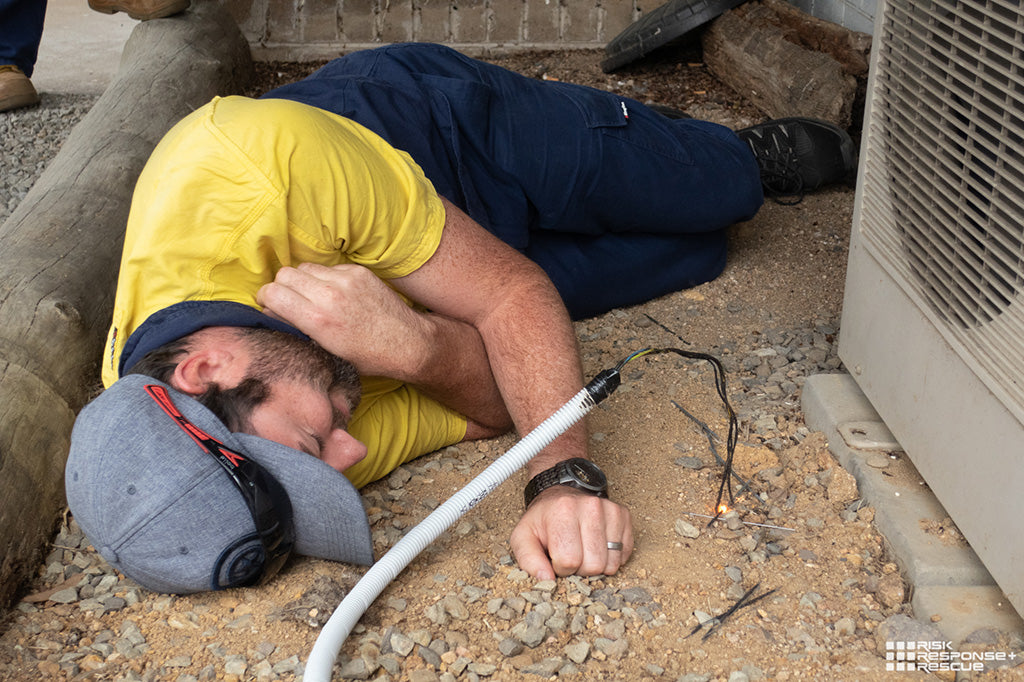Introduction
In today's hectic office, ensuring the safety and security and wellness of your workforce is paramount. One element that frequently gets forgotten is hand-operated handling, which describes the process of lifting, carrying, pushing, or drawing objects. In this post, we will discover reliable hands-on handling strategies that can aid keep your CPR and first aid certification online workforce safe and healthy and balanced. We will also review the value of emergency treatment training, consisting of CPR training and mental health emergency treatment, and exactly how these components contribute to a much safer job environment.
Manual Handling Strategies: Maintaining Your Workforce Safe and Healthy
Manual handling strategies are crucial for preventing injuries in the office. Inappropriate training strategies can result in bone and joint problems (MSDs), which account for a considerable variety of workplace injuries. To effectively reduce risks related to hand-operated handling, companies must carry out training programs that emphasize proper techniques.
Understanding Manual Managing Risks
Before diving into certain techniques, it's critical to identify the risks involved in hands-on handling tasks. According to research, inadequate training techniques can result in:
- Back pain Muscle strains Joint injuries Chronic conditions affecting mobility
Recognizing these risks permits companies and employees alike Click for source to prioritize safety.
The Significance of Training
Training plays an important duty in decreasing hand-operated handling-related injuries. It's not just about recognizing how to raise properly; it's also about understanding body auto mechanics and functional designs. A thorough manual handling training course should cover:
- Proper lifting techniques Risk analysis skills Use of tools like carts or forklifts
Additionally, including first help courses right into workplace training ensures that every person knows exactly how to respond properly in case of an injury.

Basic Lifting Techniques
Here are some fundamental strategies that every person must grasp:
1. Assess the Load
- Before lifting anything, constantly examine its weight and shape. If it appears also hefty or awkwardly formed, seek aid or use mechanical aids.
2. Positioning
- Stand near to the object. Place your feet shoulder-width apart for balance. Bend your knees while keeping your back straight.
3. Grip
- Ensure a company grip on the object. Use both hands when possible.
4. Lifting
- Lift with your legs as opposed to your back. Keep the item near your body as you stand up.
5. Carrying
- Maintain a secure pose while walking. Avoid twisting your body; rather, transform your whole body by relocating your feet.
6. Setting Down
- Lower the object by bending at the knees again. Ensure that you put it down delicately without dropping it.
Using Tools for Manual Handling
Investing in devices created for hand-operated handling can substantially reduce injury risk. Right here's a checklist of frequently made use of tools:

|Equipment Type|Objective|| ----------------|--------------------------------------|| Trolleys|For transferring hefty things|| Hoists|For lifting people or heavy objects|| Pallet Jacks|For moving palletized tons|
Incorporating Emergency treatment Training
While lessening risks via proper manual handling is essential, being prepared for emergencies is similarly important. This is where first aid training enters into play.
Types of Emergency treatment Courses Available
General Workplace First Aid
- Covers standard emergency treatment abilities required in different job environments.
CPR Training
- Teaches lifesaving cardiopulmonary resuscitation techniques vital during cardiac emergencies.
Corporate First Aid Training
- Tailored programs particularly created for corporate settings focusing on common workplace injuries.
Mental Wellness First Aid
- Provides skills to help coworkers dealing with mental wellness problems-- a vital part commonly overlooked in standard first aid courses.
Childcare Emergency treatment Course
- Focuses on responding to emergencies including kids-- perfect for those working in educational settings or child care centers.
Online Emergency treatment Course
- Offers flexibility for staff members to learn at their own speed while still covering all essential content.
Creating a Society of Safety
To keep a setting for safety and security, growing a culture where employees feel empowered to speak up regarding hazards is essential.
1. Encourage Open up Communication
Encourage staff members to report dangerous conditions without anxiety of revenge; this promotes an open discussion concerning prospective risks related to manual handling tasks.
2. Regular Training Sessions
Hold normal workshops on hand-operated handling techniques and refresher courses on first aid courses-- maintaining abilities sharp makes certain readiness throughout emergencies.
3. Promote Psychological Well-being
Since psychological health plays a crucial function in overall health, companies need to advertise mental health recognition alongside physical safety measures.
FAQs
Q1: What are the indicators that I require manual dealing with training?
A1: If staff members frequently raise hefty items or record discomfort after raising tasks, it's time for detailed manual handling training sessions.
Q2: How frequently ought to we carry out emergency treatment training?
A2: Preferably, first aid training should take place yearly; nevertheless, even more frequent sessions might be beneficial based on workplace risks or modifications in staff.
Q3: Can online programs be as effective as classroom-based training?

Q4: What sort of devices should our work environment invest in?
A4: Invest in trolleys, hoists, pallet jacks, and ergonomic furniture-- these tools help reduce injury from incorrect hand-operated handling practices.
Conclusion
In final thought, grasping correct manual handling methods is crucial for cultivating a safe and healthy and balanced labor force environment. By prioritizing comprehensive training-- consisting of crucial topics like first aid courses-- you encourage workers with expertise vital for both avoidance and action throughout emergencies like mishaps related to messed up loads.
Remember: Security isn't simply a plan; it's a culture developed through consistent initiative from every person within an organization!
By providing efficient manuals on these practices while emphasizing continual finding out with qualifications such as mouth-to-mouth resuscitation or Mental Health First Aid Courses-- companies can create offices where security thrives!